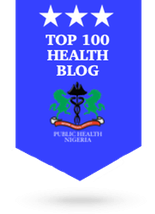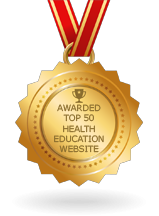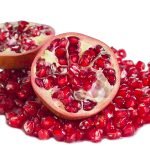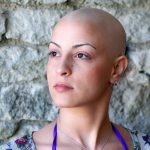Why does logic seem to get tossed out the window when it comes to alternative health?
Recently, the FDA announced:
“One weak and limited study does not show that drinking green tea reduces the risk of prostate cancer, but another weak and limited study suggests that drinking green tea may reduce this risk. Based on these studies, FDA concludes that it is highly unlikely that green tea reduces the risk of prostate cancer.”
But that’s nonsense. You cannot logically conclude, based on two “weak” contradictory studies, that something is “highly unlikely.” The only conclusion you can logically make is that you don’t know squat based on two weak and limited studies.
But even more stunning is the incidental fact that the statement is absolutely flat-out untrue. The benefits of green tea in supporting the prostate are supported by many, many substantial studies, not just one weak study. For example:
- In 2004, American Association for Cancer Research published the results of a study that concluded that “Green Tea Polyphenols Thwart Prostate Cancer Development at Multiple Levels.” http://www.aacr.org/Default.aspx?p=1963&d=274
- In 2003, an Australian study found that regularly drinking green tea can reduce the risk of prostate cancer by two-thirds. http://onlinelibrary.wiley.com/doi/10.1002/ijc.11550/abstract
- In 2005, the American Institute of Cancer Research published results indicating that green tea fights cancer.
- And then again in 2005 at the 96th Annual Meeting of the American Association for Cancer Research, the results of a clinical study were announced that showed 90 percent efficacy of green tea in men with pre-malignant prostate lesions. http://www.aacr.org/Default.aspx?p=1066&d=432
- Etc.
As I said, the statement by the FDA is just flat-out untrue. And the studies I cited above are easily found on the net. This is not obscure information. Shame on the press for not challenging the obvious flaws in the FDA statement.
So what’s going on here? If we didn’t know better, we might almost think the FDA had an agenda in discrediting green tea (or any alternative health treatment for that matter) when it comes to cancer.
But enough sarcasm. There are three key points we need to keep in mind here.
- There is no one antioxidant that works on all free radicals and in all areas of the body. Gingko biloba, for example, works primarily in the brain; grape seed extract in the cardiovascular system; and curcumin in the intestinal tract. You need a full spectrum antioxidant complex to cover your entire body and for maximum effect.
- Various antioxidants reinforce each other, which is another reason for taking your antioxidants as part of a complex. Lycopene, for example, when used in conjunction with green tea and a full complex vitamin E has been shown to inhibit prostate cancer proliferation by some 90%. (Oh my gosh! That’s another study validating the benefits of green tea vis-à-vis prostate cancer, isn’t it?) And for that matter, curcumin and green tea strongly reinforce each other.
- Alternative health treatments for cancer invariably exist as part of larger protocols. Testing any piece in isolation is self-defeating at best.
For the rest of this newsletter, since the FDA made it an issue, I would like to explore that last point in more detail.
Testing the complete protocol
In almost all cases, alternative therapies for cancer are administered as part of a comprehensive program or protocol. Nevertheless, when members of the medical community decide to test the validity of a particular treatment, they insist on separating out the pieces from the whole and testing them in isolation.
This would be akin to deciding to test a prospective football quarterback by putting him on the field with no one else playing offense. The “alternative approach” would be to put him on the field with an entire team and see how he plays. If he scores, if he leads the team to victory, if he wins the Super Bowl, we would say he was a good quarterback. To many people, that would seem to make sense.
The “medical approach,” on the other hand, would be quite different. How can we really tell if he’s any good if there are other players on the field? Great receivers could catch lousy passes, and we’d never know. A great offensive line could make him look good by blocking so well that he had all the time in the world to find his receivers. No! The only way to truly tell if he’s any good is to put him on the field alone against an entire all-pro defensive team, and then see how he does. And, of course, the moment the ball is hiked, he’d be swarmed over and killed.
But drugs pass this kind of testing. How do they do it? Quite simply, drugs are “magic bullets.” Returning to our football analogy, they indeed put our quarterback out on the field all alone — but armed with an AK-47 assault rife. Of course, as soon as the ball is hiked, he shoots the entire defensive team and walks across the goal. He wins! Unfortunately, although he scores, there are side effects. The other team is dead, and the game is over — but he did score.
Look, just like football is a team game — with the team only as strong as its weakest link — so too is alternative therapy (when it comes to treating cancer) a “team” program. On occasion, you may get good results using just one component or another, but overall you will get the best results when you run the program as a whole. To isolate components of a program from the whole is to treat them as drugs. That’s not what they are, and they will fail that test by definition.
The Additive Principle
Another point to keep in mind is that alternative therapies are not subtractive. They are “additive.” An alternative treatment that would be dismissed as ineffective because testing showed it to be only 10% effective in isolation might nevertheless be an invaluable part of a comprehensive program that contained seven 10% components — giving you a 70% chance of overcoming your cancer. But the medical establishment deliberately chooses not to test alternative therapies in this way — thus condemning all seven components with the “quackery” label. So the only way you hear about effective alternatives is by word of mouth or anecdotal evidence. Fortunately, the effectiveness of some of these programs is so strong that it is impossible to suppress their success. And that is why more and more people are turning from the failed medical programs to effective alternatives.
If you haven’t already done so, you might want to listen to my talk: Cancer, the Big Lie
Conclusion
Cancer is too important a topic to be subjected to agenda driven, formulaic pronouncements from the FDA and medical authorities. It’s high time that someone in authority fess up. Yes, there have been some successes (and every time I write a newsletter on this topic many angry people write in to tell me of their success using chemotherapy or radiation), but these successes have been more than offset by the climbing incidence and mortality rates for cancer in the world’s population. And yes, some of this can be attributed to the aging of the world’s population, but statistically, that still does not account for some 75% of these increases.
Bottom line: after waging a war on cancer for 50 years and spending $100 billion dollars a year in today’s dollars for most of those years, we have a right to expect more from that effort than higher cancer rates and increased mortality. No matter how hard governments and the medical community try to spin the story, it’s still: more cancer and more deaths from cancer. In no other endeavor in the history of the world would we call that a victory. And yet, that’s exactly how it’s billed in the media. And amazingly, even as the media perpetuates the spin, the public, for the most part, accepts it. Truly, this is one of the greatest marketing achievements in history.
And if that were not enough, not only has the war on cancer failed miserably, but these same authorities do everything in their power to convince you to avoid any alternative treatments. In fact, in many cases, they make it outright illegal to do so.
Which I guess brings us full circle to the FDA announcement on green tea…it would seem.
PS: As a side note: just this week, the Journal of Neuroscience published the results of a study indicating that high doses of green tea’s main active ingredient, epigallocatechin-3-gallate (EGCG), may significantly reduce the risk of Alzheimer’s by inhibiting the formation of beta-amyloid proteins in the brain. An interesting side note, what?










